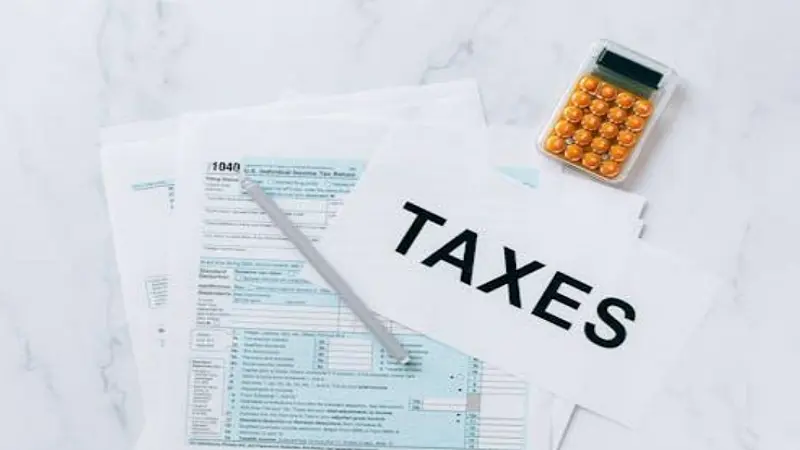Navigating health coverage tax filing can feel overwhelming, especially with the various forms and regulations involved. One document that plays a significant role in this process is the 1095-B form. This form provides essential information about your health coverage to help you meet the Affordable Care Act (ACA) requirements.
Understanding the ins and outs of health coverage tax filing is important for compliance and securing potential tax benefits. Therefore, in this article, we will guide you through health coverage tax filing, including what you need to know about this form.
Here’s what you need to know
Understanding the Basics of Health Coverage Tax Filing
Health coverage tax filing refers to reporting your health insurance status on your tax return. It is a requirement established by the ACA to increase the number of insured individuals in the United States. When you file your taxes, you must show proof of your health coverage for the previous year. This is where the 1095-B form comes into play.
This form, provided by your health insurance provider, verifies that you had qualifying health coverage throughout the year. It is essential for individuals and families, as it helps determine eligibility for premium tax credits and informs the IRS of your compliance with the ACA mandates. Failing to file accurately could result in penalties, making it crucial to understand your responsibilities.
The Role of This Tax Document in Health Coverage Reporting
1095-B is a tax form that provides information about your health insurance coverage for the previous year. It includes details about the months you were covered and your coverage type. Health insurance providers, including private insurers and government programs like Medicaid, typically issue this form.
If you’re having trouble navigating the complexities of ACA compliance and form 1095-b, 1095EZ Advantage offers a valuable solution. This turnkey service simplifies the process of ACA Compliance Reporting. They can efficiently manage your health coverage documentation, file taxes without stress, and save you time.
Who Receives 1095-B?
Understanding who receives this tax document is essential for ensuring compliance with tax regulations. This form is primarily sent to individuals enrolled in qualifying health coverage during the previous tax year. Insurance providers, including employers offering self-insured plans, must issue this form to employees, policyholders, and anyone covered under a health insurance policy.
If you have received health coverage through your employer, they typically provide you with this form. Similarly, if you purchased health insurance through a marketplace or government program, you would receive the form directly from the insurance provider. You must keep this form with your tax records, as it serves as proof of coverage when filing your taxes.
When Should You Expect to Receive this Tax Form?
The timeline for receiving this tax document can vary, but insurers are generally required to send it out by January 31st of the year following the coverage period. If you had coverage for 2024, you should expect to receive your form by January 31, 2025. If you haven’t filed your form for 2023-2024, the form needs to be filled out by February 28, 2025. However, if you’re filing it online, you must send it out by March 31, 2025.
If you do not receive your tax form by mid-February 2025 for this year, reach out to your insurance provider. They will confirm whether the form has been issued and clarify any potential issues. Remember that you need this form before filing your taxes, so allow ample time to ensure you receive it.
How to Use This Document for Your Tax Return
Using the 1095-B form for your tax return is relatively straightforward. Once you receive the form, carefully review the information provided. It will include details about your coverage for each month of the year, which is crucial for ensuring compliance with the ACA.
When preparing your tax return, you must include the information from Form 1095-B when you file your IRS Form 1040. If you had qualifying health coverage for the entire year, you may simply need to check a box indicating you met the ACA requirements. However, if there were months without coverage, you may need to include additional documentation to explain the gaps. Properly using the 1095-B form ensures that your tax return accurately reflects your health coverage status, helping you avoid potential penalties.
Common Mistakes to Avoid with this Tax Document
Filing taxes can be tricky, and errors involving the 1095-B form are common. One frequent mistake is failing to include the form when filing your taxes. Some individuals assume that because they have health coverage, they do not need to submit this form. However, not including it could lead to discrepancies and potential penalties. Always ensure that you include this form with your tax return.
Another common error is misreading the information on the form. Check if the months you were covered are accurately reported. You may need to provide additional details or documentation if there are gaps in coverage. Mistakes in reporting your coverage months could result in the IRS thinking you did not meet the ACA requirements.
Additionally, some taxpayers overlook the need to update their personal information. If you’ve changed your name, address, or health insurance provider during the year, make sure this information is accurate on the form. An inconsistency between your tax return and form can raise red flags with the IRS.
Consider working with a tax professional or using reliable tax software to prevent these mistakes. These resources can help you accurately interpret the form and ensure all relevant information is correctly submitted.
What to Do If You Don’t Receive this Form
If you do not receive your form by mid-February, take action. Start by checking your email and any online accounts with your insurance provider. Many insurers now provide electronic versions of tax forms. If you don’t find it there, reach out directly to your insurance provider for clarification. They can confirm whether the form has been issued or if there are any delays in processing.
Contact your HR department for assistance if you are enrolled in an employer-sponsored health plan. They can provide information on whether the form has been sent and help you obtain a copy if necessary.
If you cannot get a copy of the form in time for your tax filing, you can still file your taxes. You may report your health coverage using the information available to you. Just be prepared to explain the situation if the IRS requests documentation later.
Understanding health coverage tax filing is crucial for compliance and securing potential tax benefits. The 1095-b form is an important document in this process, providing essential information about your health coverage. By knowing how to use this form, avoiding common mistakes, and maintaining organized records, you can confidently navigate the complexities of health coverage tax filing. By taking all these steps, you can ensure a smoother tax filing experience and compliance with health coverage requirements.










